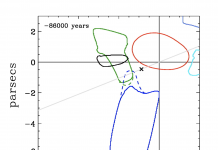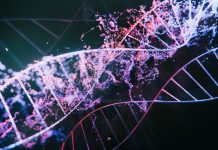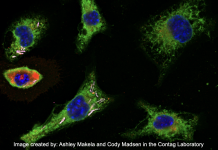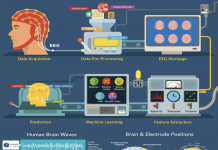Home 2024
Archives
Structural biology research and the origins of genetic coding
Charles W. Carter, Jr, Department of Biochemistry and Biophysics, University of North Carolina Chapel Hill, reviews the ways that recent research in Structural Biology, Biochemistry, Molecular Biology, and Phylogenetics have opened the origins of genetic coding to experimental study and their important implications.
Religion and accountability for restorative offender rehabilitation
Offender rehabilitation has different meanings for different people because we may have varying expectations about what rehabilitation actually looks like. Sung Joon Jang and Byron R. Johnson walk us through the role of religion and accountability in restorative rehabilitation.
Time to strengthen and enforce the north american migratory bird treaty act
The number of migratory bird populations is declining; Keith Hobson, professor and research scientist at Environment and Climate Change Canada and Western University, outlines the importance of updating conventions to protect these vulnerable species.
Development of novel therapies for pediatric cancer: Successes and challenges
Peter J. Houghton from Greehey Children’s Cancer Research Institute and Mary-Ann Bjornsti from the University of Alabama discuss some of the key challenges in the development of therapies for pediatric cancer care.
Tackling physical inactivity and a sedentary lifestyle: Two distinct approaches
Being physically inactive and sedentary are two distinct issues that affect older adults. However, each problem necessitates a unique set of solutions; Professor Isabelle J. Dionne from the Université de Sherbrooke tells us more.
Astrophysical and planetary sciences: Exploring the local interstellar medium and the next space frontier
Prof Jeffrey L Linsky from the University of Colorado Boulder, sheds light on exploring the next space frontier in this exciting astrophysical and planetary sciences focus.
Ensuring the best performance of sensor-driven irrigation systems in vineyards
Professor Pete W. Jacoby, from Washington State University, explains how to ensure the best performance of sensor-driven irrigation systems in vineyards.
Policy priorities for gender and entrepreneurship
Read here about policy suggestions from an academic-practitioner collaboration for gender and entrepreneurship.
Protecting genetic diversity to benefit nature and society
There are three ways that governments and other conservation actors at all levels can monitor and protect genetic diversity, supporting the attainment of biodiversity goals and targets. But first, what is genetic diversity, and is there potential to safeguard it better?
Ageism, gerontological nursing and healthcare contexts
Professors Kathleen Hunter and Sherry Dahlke from the University of Alberta’s Faculty of Nursing explain why gerontological nursing education is key to addressing the unconscious negative stereotypes about ageing and improving care for older adults.
What we need to know about urinary incontinence
Christopher Jayne, MD, FACOG, URPS, MIGS, Director from Greater Houston Urogyn, walks us through what we need to know about urinary incontinence, including comment on bladder injury research.
Who will staff the psychedelic resurgence?
Who will staff the psychedelic resurgence? Erika Dyck, Professor and Canada Research Chair in History of Health & Social Justice from the University of Saskatchewan, provides an intriguing answer to this question.
Carbon dots in forensics, environmental science, and medicine
Dr. Cecilia E. Van Cauwenberghe, from Frost & Sullivan, explains the revolutionary impact of carbon dots in forensics, environmental science, and medicine to detect, diagnose, and treat.
Leveraging exercise mimetics as potential therapeutics
Robert Wessells, Associate Professor at Wayne State University, explores whether identifying potential exercise mimetics can deliver the benefits of exercise to patients with reduced mobility.
Meteorological data for public health surveillance
Michael Wimberly, Professor from the University of Oklahoma, walks us through integrating meteorological data for public health surveillance and disease forecasting.
Engineered endosymbionts as novel cancer therapeutics
Satyajit Hari Kulkarni and Christopher H. Contag from the Institute for Quantitative Health Science and Engineering focus on engineered endosymbionts, which they argue is a paradigm shift in anticancer bacteriotherapy toward killing tumors from the inside out.
AI healthcare research: Pioneering iSMART Lab
Dr Narges Armanfard, Professor, talks us through the AI healthcare research at McGill University which is spearheading a groundbreaking initiative – the iSMART Lab.
Internet-delivered cognitive behavioural therapy
Heather D. Hadjistavropoulos, Hugh C. McCall, and Jill A. B. Price, walk us through internet-delivered cognitive behavioral therapy tailored to public safety personnel.
Indigenous students face disparities in STEM
Dr. Judith Brown Clarke and Dr. Wendy K’ah Skaahluwaa Todd, shed light on the crucial role of cultural identity in native American-Alaskan students’ persistence and success in STEM fields and the Geosciences.
Decoding the patterns of spiderweb capitalism
Dr Kimberly Kay Hoang, the Director of Global Studies at the University of Chicago’s Department of Sociology, reflects on ‘spiderweb capitalism’ and her efforts to unravel opaque financial networks worldwide.






















